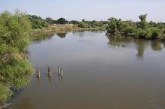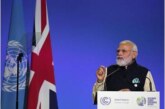Dr. Arvind Kumar, President, India Water Foundation

In the last three decades alone, nearly one-third of natural wetlands have been lost to urbanization, agriculture expansion and pollution. The loss of wetlands in urban areas has been more rapid. Data from 26 cities and towns show that since 1970s, for everyone square kilometer increase in built up area, 25 ha of wetlands has been lost. Similarly in the last 150 years, the need to create farmland, generate electricity and make water transport easier has changed the dynamics of the river. If we talk about integrated river basin management and we forget about wetlands, then the whole thing would fail in a way. Imagine being able to improve flood protection, reduce pollution, recharge groundwater and boost the diversity of plant and animal life all at the same time, Riverine wetlands can make it possible. They are bursting with life and provide a variety of different habitats, especially as they serve as spawning grounds for fish and nesting grounds for migratory birds. Rightly mentioned by the Hon’ble Minister of Jalshakti Sh. Shekhawat on World Wetlands Day celebrations on 2nd February 2021 that, “Linking Wetland Conservation to Basin Management Plan would help the entire country as a model framework.” I totally agree Wetlands located in the floodplains of a river are integral to its health as they provide key habitat for aquatic biodiversity, lateral connectivity and groundwater recharge for base flows and without integrated wetland restoration plans achieving water security targets are farfetched.
With the advent of the wetland’s guidelines for the implementation of wetlands rules 2017 around 757,000 wetlands with a total wetland area of 15.3 million ha, accounting for nearly 4.7% of the total geographical area of the country were identified. Wetland loss needs to be seen not just as a biodiversity crisis, but as a development crisis, which could lead to more water, food and climate insecurity. As member hydrology of the national wetlands committee of the Ministry of Environment Forest and Climate change, Government of India while drafting the guidelines for the implementation of the wetlands rules 2017 we asserted that a transformed response to address rapid wetlands degradation and loss would be to pursue the integration of wetlands, and their wide-ranging values, within developmental programming at various levels and bring role of state wetlands authorities to the fore for wetlands conservation. Government of India especially Ministry of Jalshakti and NMCG are already being proactive in sustainable wetland management, Ministry of Environment Forest and climate change is also engaged in it and so is the ministry of Earth Sciences. What we need is an integrated approach of various ministries to achieve the goal by strengthening our efforts and strengths, to have collective action between governments, business, UN, international organizations, NGOs, development and doner partners, local communities to ensure the long-term sustainability of water and wetlands, and the global economy.
It is the duty of every stakeholders to contribute constructively to conservation of river-wetland continuum. In the guidelines we linked the wetlands to revenue records which further lead to more wetlands cropping up through GIS mapping and more by removing encroachments. The guidelines clarified that all wetlands, irrespective of their location, size, ownership can be notified under the Wetlands Rules 2017. Well preserved wetlands also contribute to social cohesion and economic stability by ensuring livelihood and to preserving cultural identity. Given the increasing human population and its dependence on wetlands, full recognition of the values and benefits of nature is a pressing imperative. In fact the theme of the World Water Day is also Valuing Water. For all these reasons, ensuring healthy and well-preserved wetlands is crucial to alleviate poverty and meet the Sustainable Development Goals. In budget 2021 an outlay of Rs2.87 trillion towards the launch of the Jal Jeevan Mission Urban has been announced and we are totally in alignment with the government on this and suggest that there should be an allocation for the wetlands as well as they are the primary sources of water. An ecosystem health assessment of wetlands under the 100 days programme of the Government of India indicated that one in every four wetlands had low to very low ecosystem health and faced high to very high threat. To achieve our hon’ble PMs Vision related to water economy we have to conserve and restore wetlands because when wetlands degrade, so does their ability to make societies water, food and climate secure, and conserve the diversity of life. Don’t you think the key to furthering wetland protection is to motivate communities? Shouldn’t we value the unique environmental, social, and economic values wetlands provide and create practical solutions to protect, enhance, or restore those values?



